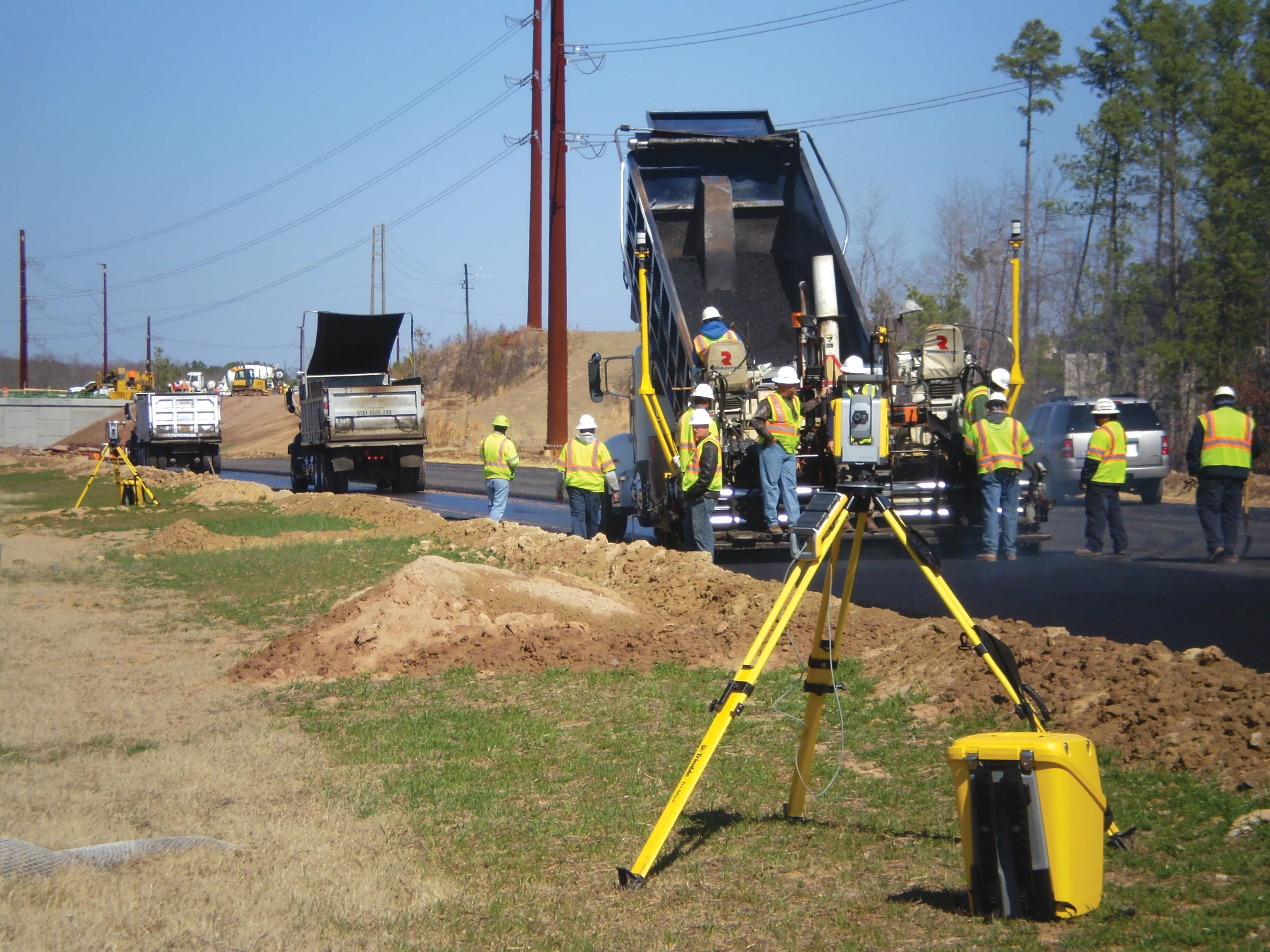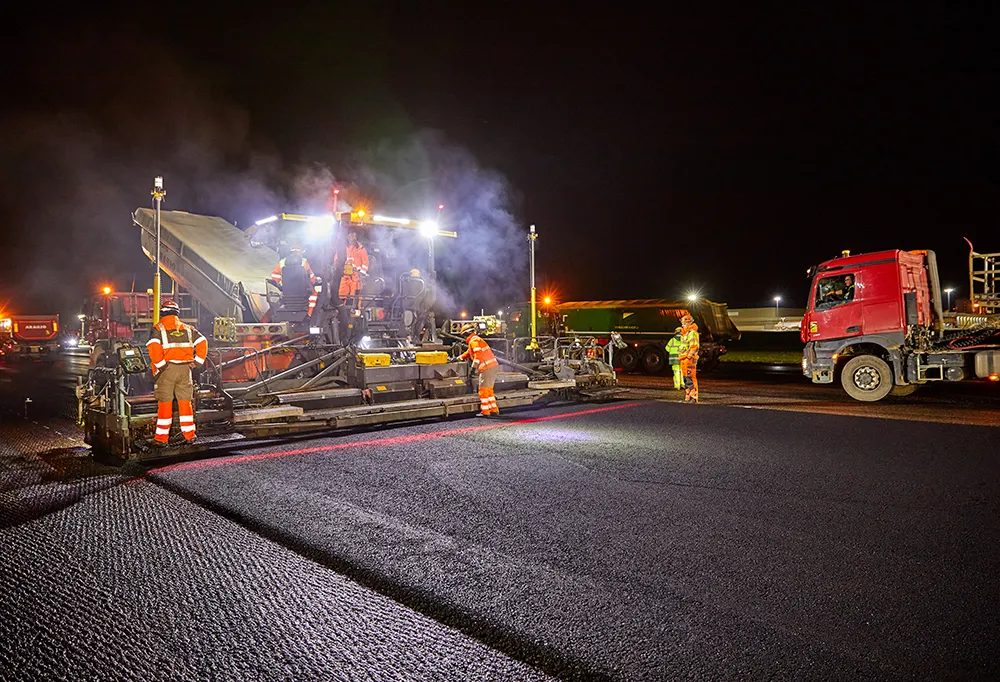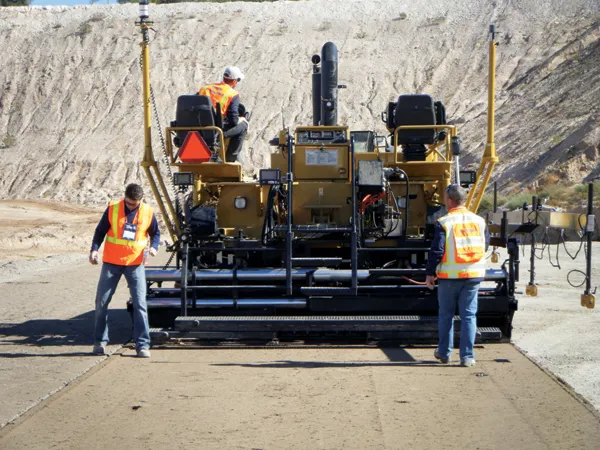As Europe’s motorcycle racing season gets underway this year, Trimble employees will be avidly following the competitions at one venue in particular – Italy’s Misano World Circuit Marco Simoncelli.
A Trimble solution recently helped to efficiently reconstruct the racing surface at Misano, about 14km south-east of the Italian city of Rimini on the eastern Adriatic coast. Since 1991, the racetrack has hosted the World Superbike Championship and, since 2007, the San Marino and Rimini's Coast motorcycle Gran
April 4, 2016
Read time: 4 mins

As Europe’s motorcycle racing season gets underway this year, Trimble employees will be avidly following the competitions at one venue in particular – Italy’s Misano World Circuit Marco Simoncelli.
A2122 Trimble solution recently helped to efficiently reconstruct the racing surface at Misano, about 14km south-east of the Italian city of Rimini on the eastern Adriatic coast. Since 1991, the racetrack has hosted the World Superbike Championship and, since 2007, the San Marino and Rimini's Coast motorcycle Grand Prix.
Since 1993 the circuit has undergone several improvements which, over time, have also involved the pit-boxes, the stands, paddock areas and some of the track accesses. The track was originally nearly 3.5km long but has been extended to just over 4km and also, for safety reasons, widened to 14m.
The latest resurfacing project, completed last year, was engineered by Jarno Zaffelli, owner of Dromo Italian Applied Circuit Design, a global experts in racetrack design and the creator, among others, of the Argentine Termas de Rio Hondo circuit.
Construction was assigned to Pesaresi Giuseppe, a road building company in Rimini. After only 14 days, the Giuseppe team completely resurfaced the track using the Trimble PCS900 Paving Control System.
The estimated work required around 80 workers and 50 vehicles using 5,000tonnes of tarmac. To achieve this, it was crucial to change the transverse and longitudinal slope gradients, eliminating all the bumps and altering the extent of the crown.
Performing the work with absolute accuracy was essential. The use of 3D technology and positioning systems was explicitly requested in the technical specifications, to be used both during the design and milling stage.
Pesaresi Giuseppe chose SITECH Italia, Trimble’s distributor in Italy for heavy civil construction products, as its technology partner. The SITECH Italia team served as a consultant during the survey, design and final milling stages, thanks to the company’s experience and the multiple solutions that it offers for road paving.
The Trimble PCS900 system ensures milling with variable depth and slope, eliminating undulations and preparing an even substrate for the new surface. Using the PCS900 provides many benefits. These include a more even substrate and shorter construction period because trucks can move around the site more easily, without being obstructed by wires and stakes.
By milling only up to the required depth, the machine uses less fuel and overall wear and tear on the equipment is reduced. The need to remove less material also means fewer trucks are required and costs to remove the materials are reduced. Also, using less asphalt helps keep costs down further.
Trimble’s active tracking system technology ensures the total station is aligned with the active prism on board the machine, as well as providing millimetre control of the milling drum.
While milling at a constant depth typically meets the requirements of the technical specifications, it does not solve road unevenness issues. Often unevenness results in the re-creation of the longitudinal waves during paving. Trimble’s PCS900 can mill with variable depth and slope, so completely eliminating undulations. This allowed the contractor to prepare a perfectly even substrate for the new paved surface, which quickly resulted in reducing the amount of wasted material.
For the initial surveying and subsequent milling operations, Pesaresi Giuseppe and the topographic service and civil engineering company Geo & Domus analysed the existing conditions using a Trimble UX5 drone. This was followed by the installation of levelled kerbstones every 150m with millimetre accuracy.
The entire circuit then underwent a millimetre-level survey using three Trimble SPS930 robotic total stations, with one-second precision. This provided all essential detail for the design phase and it allowed the contractor to produce highly accurate 3D design for use on the milling machine.
The Trimble robotic total stations where then placed on the kerbstones, while the 3D optimisation project was loaded on the milling machine. Equipped with the Trimble PCS900 control system, the milling machine began to mill the asphalt surface using the 3D design and achieve millimetre level precision.
Additionally using Trimble’s Hot Swap feature, the contractor was able to switch between total stations along the length of the track without interruption to the milling operation. This ensured no additional bumps were added for machine stops. It also boosted production, as the mill never had to be stopped when moving between total stations.
Resurfacing the circuit took just four days and the final paved surface met both the completion date and technical requests specified in the design stage.
A
Since 1993 the circuit has undergone several improvements which, over time, have also involved the pit-boxes, the stands, paddock areas and some of the track accesses. The track was originally nearly 3.5km long but has been extended to just over 4km and also, for safety reasons, widened to 14m.
The latest resurfacing project, completed last year, was engineered by Jarno Zaffelli, owner of Dromo Italian Applied Circuit Design, a global experts in racetrack design and the creator, among others, of the Argentine Termas de Rio Hondo circuit.
Construction was assigned to Pesaresi Giuseppe, a road building company in Rimini. After only 14 days, the Giuseppe team completely resurfaced the track using the Trimble PCS900 Paving Control System.
The estimated work required around 80 workers and 50 vehicles using 5,000tonnes of tarmac. To achieve this, it was crucial to change the transverse and longitudinal slope gradients, eliminating all the bumps and altering the extent of the crown.
Performing the work with absolute accuracy was essential. The use of 3D technology and positioning systems was explicitly requested in the technical specifications, to be used both during the design and milling stage.
Pesaresi Giuseppe chose SITECH Italia, Trimble’s distributor in Italy for heavy civil construction products, as its technology partner. The SITECH Italia team served as a consultant during the survey, design and final milling stages, thanks to the company’s experience and the multiple solutions that it offers for road paving.
The Trimble PCS900 system ensures milling with variable depth and slope, eliminating undulations and preparing an even substrate for the new surface. Using the PCS900 provides many benefits. These include a more even substrate and shorter construction period because trucks can move around the site more easily, without being obstructed by wires and stakes.
By milling only up to the required depth, the machine uses less fuel and overall wear and tear on the equipment is reduced. The need to remove less material also means fewer trucks are required and costs to remove the materials are reduced. Also, using less asphalt helps keep costs down further.
Trimble’s active tracking system technology ensures the total station is aligned with the active prism on board the machine, as well as providing millimetre control of the milling drum.
While milling at a constant depth typically meets the requirements of the technical specifications, it does not solve road unevenness issues. Often unevenness results in the re-creation of the longitudinal waves during paving. Trimble’s PCS900 can mill with variable depth and slope, so completely eliminating undulations. This allowed the contractor to prepare a perfectly even substrate for the new paved surface, which quickly resulted in reducing the amount of wasted material.
For the initial surveying and subsequent milling operations, Pesaresi Giuseppe and the topographic service and civil engineering company Geo & Domus analysed the existing conditions using a Trimble UX5 drone. This was followed by the installation of levelled kerbstones every 150m with millimetre accuracy.
The entire circuit then underwent a millimetre-level survey using three Trimble SPS930 robotic total stations, with one-second precision. This provided all essential detail for the design phase and it allowed the contractor to produce highly accurate 3D design for use on the milling machine.
The Trimble robotic total stations where then placed on the kerbstones, while the 3D optimisation project was loaded on the milling machine. Equipped with the Trimble PCS900 control system, the milling machine began to mill the asphalt surface using the 3D design and achieve millimetre level precision.
Additionally using Trimble’s Hot Swap feature, the contractor was able to switch between total stations along the length of the track without interruption to the milling operation. This ensured no additional bumps were added for machine stops. It also boosted production, as the mill never had to be stopped when moving between total stations.
Resurfacing the circuit took just four days and the final paved surface met both the completion date and technical requests specified in the design stage.









